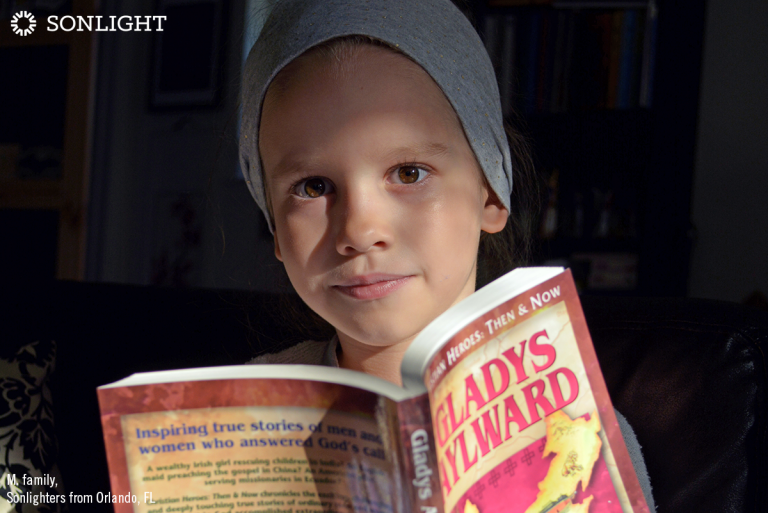
Worldview formation begins long before high school-level worldview courses, long before a child ever knows the terms apologetics, theology, or politics. By the time we as homeschool parents begin to make curriculum decisions for our children—much less prepare a high school transcript—we’ve already spent long hours teaching and modeling worldview.
1. You’re Already Teaching Worldview
It began the moment we first helped our daughters or sons begin to sort out appropriate ways to navigate choices. When we teach our little ones to say please, to communicate in words rather than screams, and to refrain from pushing siblings, we’re building the foundation of the viewpoint from which they will interpret everything they encounter. We model worldview, too, in the books we choose to read to aloud. As parents, we delineate right and wrong, good and evil, in these basic ways from the very beginning.
As our children grow, their environment expands and so too does their awareness of right and wrong. As caring parents, we may be tempted to shield them from evil for as long as possible. In many circumstances, this is the correct and the wise decision—but it’s not quite as simple as that.
2. When Teaching Truth, Don’t be Afraid to Include the Context of Opposing Evil
As a missionary kid born abroad, I saw peeks into evil at a young age. I knew angry villagers attempted to kill my father by hurling rocks and stones at him. And in another country, I knew the state was vehemently opposed to the ideas in the stacks of Bibles he’d stuff into duffel bags and smuggle overland, beyond the Iron Curtain. But here’s the thing—these glimpses of evil served to fill me with an overwhelming sense of awe at how powerful and majestic God must be if people would go to such lengths to oppose Him.
When my daughter was in kindergarten, she could recite back to me, “God is good." But having led a delightfully safe and secure life, she had no concept of what good actually was. Good, in fact, was all she knew.
As we snuggled together and read aloud from History / Bible / Literature A, she was gently introduced to the clash between the Egyptians and the Israelites, and (in a now-retired Sonlight book) the clash between the Vikings and the Lindisfarne monks, too. As we read, a light bulb went on for her, and I was witness to a powerful and profoundly developing sense of truth versus evil. “The way to glorify God, mama,” she would tell me, “is not to do idol worship and not to pray to kings. Only pray to the one true God. Egypt and Jerusalem were similar, Momma. Both had king-people who did not worship the one true God. Both had king-people plotting to kill! Both did not pray to God, but to false kings and false gods."
The Israelites of old were instructed to teach their children not only God’s covenant, but also the battles and exploits of heroes of faith who had gone before. When the Israelites instructed their children, the triumph of God was always taught in context of the opposing evil. These conquests were not stripped of all information about the pagan nations, or presented in sanitized, rewritten form, showing only the Israelite’s actions. In Exodus 13:14, we read the following: "And it shall be when your son asks you in time to come, saying, 'What is this?' then you shall say to him, 'With a powerful hand the Lord brought us out of Egypt, from the house of slavery.’”
How would this deliverance be remarkable at all unless we understood the oppression God’s people had been under? Would early Christian martyrs stand out as phenomenal examples of dedication to the cross of Christ, if we minimized the evil leading to their execution?
3. Tell the Whole Story
History needs to be told in context. This is why I love Sonlight so much. Stories provide context in a way that rewritten textbook sources never can. While it is admirable to wish to tell history from a Christian perspective, this attempt to smooth over the mess can be problematic. As our children get older, we must be careful to resist the temptation to paint rough patches of history in a purely positive light, or whitewash history to the point of inaccuracy.
If we take this paraphrasing too far, for too long, we do our children a disservice. The powerful triumph of victory over evil is lessened if we continually downplay the extent of evil. We need to be carefully not to accidentally narrow the gap between good and evil, between right and wrong, between light and darkness, or between truth and deception. We need to tell the whole story—and Sonlight books do an excellent job of this. We must give our children real stories of real people, not just sanitized retellings. We must teach not only the good alone, but also of good’s triumph over evil.
The essence of teaching worldview, after all, is to equip children to effectively differentiate between the two.
Ready to explore an educational option that helps you impart a Christian worldview? Go to SmoothCourse and get started today.









